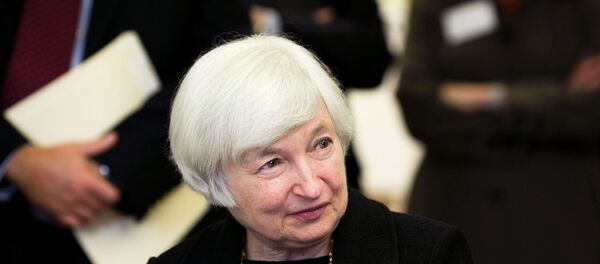Kristian Rouz — The US dollar is bound to post its largest one-month drop since June as the markets are gradually selling the news after the US Federal Reserve raised borrowing costs earlier this month. The Fed's dovishness and the mixed performance indicated by US macroeconomic data are signaling that the pace of further monetary tightening may be slower than previously anticipated.
While the currency markets have been betting against the greenback, oil prices have posted a weekly advance, propelling Russian bonds higher. Russia's debt securities have attracted greater demand earlier as the nation's central bank is expected to adopt stimulus policies, like more aggressive interest cuts, next year as inflation slows. All that being said, capital may start flowing into emerging markets again; investors are seeking lucrative opportunities. Nevertheless, implicit risks exist.
The Dollar Spot Index of the greenback trading against 10 its major peers has dropped 0.9% in December thus far, and is expected to fall further towards the year's end. The dollar dropped 3.7% against the euro to $1.0971 and 2.3% against the yen to 120.32 by the end of this week. The yearly gain of the dollar index has been about 9% thus far, however, greater losses are forecast into January.
"There is still some year-end rebalancing for many large portfolio managers away from the dollar," Matt Weller of the Grand Rapids, MI-based Gain Capital Holdings' Forex unit said. "That could be a headwind for the next couple of weeks."
Meanwhile, Russia is enjoying an unexpected influx of investment into its greatly depreciated assets, and its debt securities have attracted some attention from international capital.
While the yield on the five-year Russian bond dropped 0.03% to 10.07% by the week's end, the bonds' value rose, and the trend is anticipated to persist well into 2016 as the Russian central bank plans further cuts to its base interest rate from the current 11% in order to help the nation's economy overcome the ongoing recession.
The rising oil prices have also supported an investment influx into Russian bonds. However, long-term bullish bets on the dollar are still high, potentially jeopardizing oil prices.
However, even if the oil prices are set to steadily recover, the rising fuel costs would boost inflation in the advanced economies, contributing to an acceleration in overall economic growth. That said, the prospect of the dollar appreciating further amidst a stronger economy and the ongoing, albeit slower, Fed tightening, is still there. It is yet too early to conclude that the greenback's bull trend has stopped or reversed.



